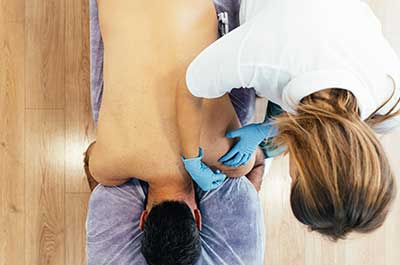Cold water immersion has been making waves, with celebrities from Madonna to LeBron James crediting ice baths for enhanced health and muscle recovery. But does subjecting yourself to punishing cold for health and wellness make sense?
Emerging research suggests frigid showers, ice baths and other immersion tactics produce both mind and body benefits. But you can get too much of a good thing—and not everyone will benefit from cold therapy.
What Is Cold Therapy?
The idea of turning to cold temps to cure what ails you isn’t new. Dating back to Hippocrates, healers recognized the healing power of frigid temperatures. In ancient Greece, cold water was used to boost energy and ease pain. In the 1960s, scientists began using cold-water immersion for post-exercise recovery.
Cryotherapy (cold therapy) comes in many forms:
- Cold showers, for 5 to 10 minutes at temps between 50 and 59 degrees
- Cold spray, which numbs a small area
- Ice baths, submerging your body from the neck down in cold water
- Ice packs, applying ice to a specific area to treat pain or injury
- Whole-body cryotherapy, which happens in a studio, gym or medical spa, and requires stepping into a chamber that exposes the body to freezing cold vapor
The Reported Benefits Of Cryotherapy
Temporary physical stressors (like an ice bath) can trigger the body’s innate healing mechanisms. Fans of cold therapy say exposing yourself to cold has effects that can improve health and well-being, including:
1. Boosting immune function
While the research in this arena is limited, there’s some evidence that frigid temperatures activate our innate immune response. In one study of workers in the Netherlands, researchers reported that regular cold showers led to a 29% drop in sick days among employees. Other research suggests exposure to cold may translate to more brown fat, which burns more calories than white fat.
2. Enhancing mood
Cold exposure of any type activates your fight-flight-or-freeze response. While that may sound like a bad thing, the pendulum swings in the other direction when you emerge from the cold temperatures, triggering your relaxation response. The end result: A surge in feel-good hormones called endorphins, which can lift your mood and make you feel more energized and alert.
3. Reducing inflammation
Cold exposure appears to reduce inflammation and may help fight inflammation-related pain and swelling. There’s even evidence that cold showers help reduce pain and inflammation in people with inflammatory arthritis.
4. Alleviating muscle soreness
Studies show that bathing for 5 to 15 minutes in chilled water (50 to 59 degrees) helps alleviate muscle soreness after exercise. But icing for this purpose is controversial and ice for muscle recovery isn’t always the best course of action.
5. Stimulating metabolism
Limited research suggests that taking cold showers and ice baths may improve circulation and kickstart metabolism (the process your body uses to turn food into energy). The theory is that shivering to stay warm can ignite your body’s fat-burning furnace.

Go Where The Pros Go
How To Get The Cool Perks—Painlessly
For the average healthy person, the only real risk of cold-water immersion is the mind-numbing sensation of freezing cold water. But here’s the thing about cold therapy: You don’t have to spend an hour immersed in 50-degree water to get the benefits.
The best way to begin is by ending your showers with cold water. Start with 1 minute of cold water and work your way up to 5 minutes.
Want to up the ante? Immerse yourself in a bathtub filled with cold water (about 60 degrees), and gradually add a bag or two of ice to the tub. Just keep a thermometer handy to ensure the water doesn’t dip below 53 degrees to prevent hypothermia and cold shock. Then soak for 5 to 8 minutes, but no more than 10.
If you have poor circulation, heart or lung disease, diabetes or Raynaud’s syndrome, it may be best to skip cold therapy of all types. At the very least, talk to your doctor before shocking your system.
Nick Parkinson, M.Ed., AT, ATC, TSAC-F Supervisor of Athletic Training with Henry Ford Sports Medicine, also leads Sports Performance training at the Henry Ford Center for Athletic Medicine. He is a regular contributor to Henry Ford LiveWell. Learn more about Nick.



